What is mosque?
The English word “mosque” came from the Arabic word “Masjid” meaning “a place for prostration (Sajada)”. Mosque generally means a Islamic religious building where many people with the same intention can pray together. Mosques throughout the world are built based on an axis facing Mecca (Qibla).
History
They have developed significantly from the open-air spaces that were the Quba Mosque and Al-Masjid al-Nabawi in the 7th century. Many mosques have elaborate domes, minarets, and prayer halls. Mosques originated on the Arabian Peninsula, but are now found in all inhabited continents.
Mosques diffused into India during the reign of the Mughal empire in the sixteenth and seventeenth centuries. The Mughals brought their own form of architecture that included pointed, onion-shaped domes, as seen in Delhi’s Jama Masjid .Mughal style became the dominant feature in many of the old mosques in India, Pakistan and Bangladesh.
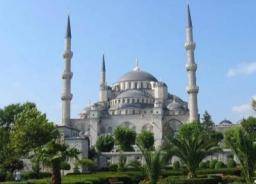
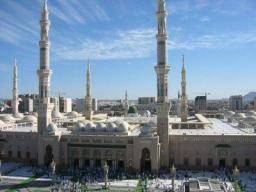
Quba Mosque Al-Masjid al-Nabawi
Types of Mosques
At the prayer at noon every Friday, young male members of community get together at the “Friday Mosque” (Jami Mosque, it is called Jama Masjid in India) and in principal they pray collectively with a leader of prayer (imam).
When Islam established its political power in a new place, a Friday Mosque is built at first. With an increase of the number of Muslims, construction of mosques become more active, and major cities came to have plural Friday mosques and numerous other mosques. These include, apart from Friday Mosques, block mosques (hara, mahale), private prayer buildings and mosques completed with tombs, prayer open spaces (idgah or Amusallah) for major festivals (id) in the suburb, etc.
There are many cases in which one room of a complex is set aside to be used as a public mosque. As seen, there exist various types of mosques in different locations and size, wherever Muslims exist.
Facilities of mosques
The only element essential to a mosque is a hollow space (mihrab) on qibla wall, showing the direction of Mecca. This is only a mark for prayer and it is never a sacred sanctuary like a chappel in Buddhist temple.
In some cases, a lump, symbolizing a light, considered to be one of the predicaments of God, is drawn inside the mihrab, or a few mihrabs are provided on the qibla wall of a single mosque.
In a Friday Mosque Minbar, a platform in the form of stair, next to the mihrab, may be provided for the preacher (imam), who leads prayer. Muslims, who are considered to be equal in the eyes of God, pray collectively, lining up parallel to the qibla wall, being led by the imam.
A facility for purification (udu, which is conducted before prayer, is important as well. Water flowing from fountains (hauz) in the courtyard (sahan) is not only important for ritual purposes but it effectively creates a pure and clean atmosphere.
A tower (minaret, minar), from which a call for prayer can be announced, is not necessarily essential, however, it is a facility often seen in mosques.
|
|
Top left: Mihrab. |
Function of mosque
The primary function of a mosque is, of course, a place for offering a prayer.
However, the first mosque built was a residence for the prophet Muhammad when he propagated in Medina. In addition, the early mosques became a stronghold for Muslim political power.
A Friday Mosque was a place for administration where proclamation of regulations and trials were conducted, a place for learning, with a library attached providing for lectures. Also, in some cases, a mortuary and a place to wash remains are included and a ritual for the deceased could be held.
Mosque functioned as a public place with multiple purposes in Islamic cities, and it still does. It should be mentioned that a mosque as a religious architecture has no object or such direct prayers toward. Upon prayer, Muslims become aware of the fact that they are religious Muslims who are equal in front of God, and a mosque provides an immaculate public place in which to conduct the prayer.
![[filefield-description]](https://www.archinomy.com/wp-content/uploads/case-studies/2011/jama-masjid-delhi.jpg)
![[filefield-description]](https://www.archinomy.com/wp-content/uploads/case-studies/2011/jama-masjid-delhi-2.jpg)
Important Mosques in India
| 1. Name : Jama masjid
Location : Delhi Year :1644 Leader :Shah Jahan |
|
| 2. Name : Charminar
(also known as mosque of four minerats) Location : Hyderbad Year :1591 Leader : Muhammad Quli |
|
| 3. Name : Mecca Masjid
Location : Hyderbad Year :1617-94 Leader : Muhammad Quli |
One of the oldest mosques and the biggest mosque located in Hyderabad, India |
| 4. Name :Moti Masjid
Location : Delhi Year :1660 Leader : Shah Jahan |
|
| 5. Name :Tipu Sultan
Location : Kolkata Year :1832 Leader : Prince Ghulam Mohammed |
|
| 6. Name : Sidi Saiyyed
Mosque Location : Ahmadabad Year :1573 Leader : Sidi Saiyyed |
|
| 7. Name : Mubarak Mosque
Location : Qadian Year :1882 Leader : Mirza Ghulam Ahmad |
|
| 8. Name :Great Mosque
Location : Lucknow Year :1840 Leader : Muhammad Ali Shah |
|
| 9. Name :jama masjid
Location : Mumbai Year :1802 Leader : |
|
| 10. Name :Babur Mosque
Location : Ayodhaya Year :1528 Leader : Babur |
|
| 11. Name :Sree syed masjid
Location : Aligarh Year : Leader : |
|
| 12. Name :Cheraman Juma
Masjid Location : Kerala Year :629 Leader : |
|
Jamia Masjid, Ahmedabad.
Built in – 1423AD.
By. Ahmed-Shah.
Dimension – 382’ X 258’9 116mX79m)
It is consider to be nadir of mosque design in western India because of its abstract standard of Islamic architecture. This structure does not look like other Islamic structures, by subjective or romantic view, this building speaks the salient fusions in stone of the soul of two religions that were apparently contradictory as day and night. The fusion here thought , is not of the one entity dissolving into the other, but rather a meeting of two on equal terms., lending and burrowing.
| Structural
The scheme of constructing a temple and introducing it into the mosque sanctuary as a central part has been failed to perceive by builders , which a building Cleary speak of it as the jamia masjid is contrast of it. This is apparent in its every part , particularly in its facades which , is the composition of solids and voids , which is in perfect combination. The solid walled and buttressed central triple arched composition is flanked by the airy lightness of peristyler verandahs. Then again the graceful Islamic arches of the central postern can be seen , “ the alternation and interplay of light and shade among its frontal columns and finally that engrailed arch springing so lightly and fancifully from its slender shafts. For an orthodox Islamic eye ,the interior maybe, garrulous and composed of lithic struts propped one above another linked revitted scaffolding, but to another, the interior is “ as if the poetry of the temple had flown into the sobriety of the mosque. To create a mysterious spiritual equilibrium. |
|
Liwan Of Jama Masjid
Dimensions – 210’X950’( 64mX 290m)
It is a huge plain hall consisting of 300 tall slender pillars , so closely set in part that the interior stimulates a thick grove of silver pine trunks..
The hall however , does not evoke the deathly monotony of the south Indians halls of 1000 pillars.
Islamic tenets , both in terms of space and construction , encourage a designers to build a central shaft of space rising vertically through two flier of flanking balconies. This dynamic central volume is roofed by a corbelled dome resting over a octagonal ring of column s, each of the eight facades being filled in with panels of jalis.
![[filefield-description]](https://www.archinomy.com/wp-content/uploads/case-studies/2011/liwan-of-jama-masjid-1.jpg)
![[filefield-description]](https://www.archinomy.com/wp-content/uploads/case-studies/2011/liwan-of-jama-masjid-2.jpg)
![[filefield-description]](https://www.archinomy.com/wp-content/uploads/case-studies/2011/liwan-of-jama-masjid-3.jpg)
![[filefield-description]](https://www.archinomy.com/wp-content/uploads/case-studies/2011/liwan-of-jama-masjid-4.jpg)
The balconies provided are sufficiently for the private Islamic quality to the women, domed roof added Islamic quality to the interior as well as the facades and the open grills below the dome made the central bay an open shaft generating cool currents in the air so essential in the hot and humid climate of Ahmadabad. The upper story of shaking minarets which have been the only visually discordant notes of the facades , which where destroyed by earthquake.
While the Ahmed Shah’s masjid marks in many ways the culmination of Guajarati mosque design, his tomb furnished the earliest model for the innumerable Guajarati tombs. The plan once again is devised from the Hindu temple mandapas, recognized to allow for the square, enclosed and domed chamber in the middle of the house the grave. Thus the characteristic Guajarati tomb instead of being composed of solid cube and hemisphere became a dome resting over a square open perstylar colonnade roof with smaller cupolas.
![[filefield-description]](https://www.archinomy.com/wp-content/uploads/case-studies/2011/liwan-of-jama-masjid-5.jpg)
![[filefield-description]](https://www.archinomy.com/wp-content/uploads/case-studies/2011/liwan-of-jama-masjid-6.jpg)
![[filefield-description]](https://www.archinomy.com/wp-content/uploads/case-studies/2011/liwan-of-jama-masjid-7.jpg)
![[filefield-description]](https://www.archinomy.com/wp-content/uploads/case-studies/2011/liwan-of-jama-masjid-8.jpg)
Biblography
1.HOA- Bamister Fletcher….. 20th edition
2. The architecture of India( Islamic 727-1707AD)- Satish Grover
3.Muhammadan architecture in Gujarat- Burgess,J
4. Islamic architecture India…..-….
5. Wikipedia encyclopedia
The Comparative Analysis Of Diffrerent Mosque In Different Parts Of India.
The Tuglaq are responsible for creating rather militant style of architecture comprised of fortress like sloping walls studded with buttress and circular pylons.
In Bengal, due to non availability of stones as a building materials and due to incessant rains gave rise to a largely curved mosque with a characteristics of steeply sloping parapet . The surfaces were embellished with terracotta decoration in bricks which was the chief building materials.
In Jaunpur , due to strong influences of Tuglaq style of Delhi , resulted in the construction of large flamboyant stone pylons interwoven with colonnade liwans.
Mandur builder is considered as the finnest mosque in India as,due to Tuglaq influence and retains robust and original style of their lo0cal construction method.
In Gujarat, since the Muslim rulers are completely swamped by the artistic skills of local Jain and Hindu craftsman. They devised and construct Liwans for the mosque which were virtually temple mandapas with the facades decorated and pointed arches , so the hall is supported by virtual forest of columns. thus it has been classified as the “temple in mosque”
For south Indian mosque, especially in Hyderabad , mostly retained the original Persian style.
First Mosque
It is in Bhambore ( ancient Debal) situated 40km away from the modern Karachi (Pakistan)
Built in 727AD ,It is known to be earliest Muslim monument in the Indian sub-continent. it has got a paved courtyard 75’X58’ and outer dimension of 128’X 122’,on the three sides of it, is cloisters with two rows of pillar , and on the west is having 33pillar.
Unlike Hindu temple, the planning of mosque is not goverened by the complex geometric theories of architecture,,Rather the basic concept of a mosque has evolved from the propet Mohammed,s home in his birth place. Here the courtyard is attached to building to have faithful gathering, and consisit of rectangular open air spaces, cordoned by by wall or cloister, which within that a people prostrate.
Quwat-Ud-Islam mosque in Qila Rai Pithera
Built by Quib-ud-din in 1165AD.
– 217’X150’
It is to worship for the faith of conquered territory , and inorder to celebrate the everlasting glory of Islam.
It is built by joint venture of Hindu and Muslim artists .
Unlike the Hindu temple it is not govern by the geometrical theory of architecture.
its basic concept is evolved from the birth place of prophet Mohammed’s house in birth place, the open to sky rectangular courtyard is to gather the faithful followers.
Features
it is built around the paved courtyard .
– its double height is required as at corners ., this was achieved by superimposing the columns over each another.
The domes on the entrances and courtyard corners are adorned with different patterns.
The cupolas were fashioned by infilling the lime concrete .
the terraced pyramids that would result out the Hindu tabulate system of roofing and then applying a thick layer of plaster to produce the smooth profile of a shallow dome.
![[filefield-description]](https://www.archinomy.com/wp-content/uploads/case-studies/2011/features-1.png)
![[filefield-description]](https://www.archinomy.com/wp-content/uploads/case-studies/2011/features-2.png)
![[filefield-description]](https://www.archinomy.com/wp-content/uploads/case-studies/2011/features-3.png)
![[filefield-description]](https://www.archinomy.com/wp-content/uploads/case-studies/2011/features-4.jpg)
Mosque In Ajmer in Rajasthan.
It is known as Arhai –din-ka –jhonpra (two and half day cottage.)
-it is built under the sultan iltulmisb
it is same like above mosque but it is constructed on large scale, mostly on the platform cut out of hills.
features
– the roof of the prayer hall is a series of corbelled dome planted over a square pillared bays.
The screen arches is also used here.
Jamat Khana Masjid
The huge space is acquired by rationally joining together a three cubic compartment , each one with its own dome.
Here the prosaic liwan is transform in the composite rectangular hall uninterrupted by columns.
– the three arched opening in the eastern wall is placed masqsura or the attached screen of arches.
Covered Court Of Khirki Masjid
It is constructed by Tuglaq, it fall into its general pattern varying in only sizes and detail.
Due to long summers scorching hest of sun, it is fully covered with domes and flat roof , leaving four symmetrically arranged open–to–sky courtyard for light and ventilations.
Mecca Masjid, Hyderbad
One of the oldest masjids in Hyderabad and one of the biggest in India, Mecca Masjid is a listed heritage building located close to the historic landmarks of Charminar, Chowmahalla Palace and Laad Bazaar. Muhammed Quli Qutub Shah commissioned bricks to be made from earth brought from Mecca and inducted them into the construction of the central arch of the masjid, which explains its name.
![[filefield-description]](https://www.archinomy.com/wp-content/uploads/case-studies/2011/mecca-masjid-hyderbad-1.jpg)
![[filefield-description]](https://www.archinomy.com/wp-content/uploads/case-studies/2011/mecca-masjid-hyderbad-2.jpg)
Like many other ancient buildings in the city, the masjid is an awe-inspiring granite giant. The main hall of the masjid is 75 feet high, 220 feet wide and 180 feet long, big enough to accommodate ten thousand worshippers at a time. Fifteen graceful arches support the roof of the main hall, five on each of the three sides. A sheer wall rises on the fourth side to provide mehrab. The three arched facades have been carved from a single piece of granite, which took five years to quarry.
More than 8,000 workers were employed to build this grand masjid. Muhammed Qutub Shah himself laid the foundation stone of the masjid. “It is about 50 years since they began to build a splendid pagoda in the town which will be the grandest in all India when it is completed. The size of the stone is the subject of special accomplishment, and that of a niche, which is its place for prayer, is an entire rock of such enormous size that they spent five years in quarrying it, and 500 to 600 men were employed continually on its work.
On the four sides of the roof of the main masjid are ramparts made up of granite planks in the shape of inverted conches perched on pedestals. From the cornice of the masjid, its minarets are not as high as the minarets on the mazaar (Nizams’ tombs) haven from their cornice. The octagonal columns have arched balconies on level with the roof of the masjid with an awning for a canopy above which the column continues upwards till it is crowned by a dome and spire.
![[filefield-description]](https://www.archinomy.com/wp-content/uploads/case-studies/2011/mecca-masjid-hyderbad-3.jpg)
![[filefield-description]](https://www.archinomy.com/wp-content/uploads/case-studies/2011/mecca-masjid-hyderbad-4.jpg)
![[filefield-description]](https://www.archinomy.com/wp-content/uploads/case-studies/2011/mecca-masjid-hyderbad-5.jpg)
![[filefield-description]](https://www.archinomy.com/wp-content/uploads/case-studies/2011/mecca-masjid-hyderbad-6.jpg)
![[filefield-description]](https://www.archinomy.com/wp-content/uploads/case-studies/2011/mecca-masjid-hyderbad-7.jpg)
Glossary
Zanana – women’s private apartments.
Shia- muslim sect who accpt alis as the true successor to mohammed.
Sarai- halting place for travellers.
Sahn- open courtyard of mosque.
Rauza – combination of tomb and a mosque.
Qutb- axis/pivot.
Qila-fort.
Mehrab-arch specifically the central arch in the western rear wall of indian mosque.
Masjid- place prostation(mosque)
Maqsura-screensed arched façade of liwan
Kotla-royal citadel
Liwan-the pillared and roofed main sanctuary of the mosque.
Gumbuaz-dome
Hammam=-bath

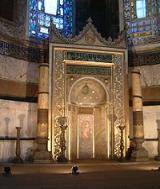
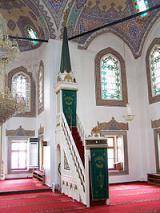
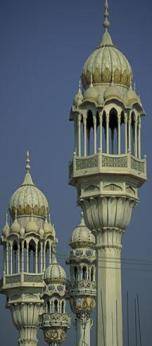
![[filefield-description]](https://www.archinomy.com/wp-content/uploads/case-studies/2011/jama-masjid.png)
![[filefield-description]](https://www.archinomy.com/wp-content/uploads/case-studies/2011/charmina.jpg)
![[filefield-description]](https://www.archinomy.com/wp-content/uploads/case-studies/2011/mecca-masjid.jpg)
![[filefield-description]](https://www.archinomy.com/wp-content/uploads/case-studies/2011/moti-masjid.jpg)
![[filefield-description]](https://www.archinomy.com/wp-content/uploads/case-studies/2011/tipu-sultan.jpg)
![[filefield-description]](https://www.archinomy.com/wp-content/uploads/case-studies/2011/sidi-sayyed.jpg)
![[filefield-description]](https://www.archinomy.com/wp-content/uploads/case-studies/2011/mubarak.jpg)
![[filefield-description]](https://www.archinomy.com/wp-content/uploads/case-studies/2011/great-mosque.png)
![[filefield-description]](https://www.archinomy.com/wp-content/uploads/case-studies/2011/jama-masjid.jpg)
![[filefield-description]](https://www.archinomy.com/wp-content/uploads/case-studies/2011/babur.jpg)
![[filefield-description]](https://www.archinomy.com/wp-content/uploads/case-studies/2011/sree-syed-masjid.jpg)
![[filefield-description]](https://www.archinomy.com/wp-content/uploads/case-studies/2011/cheraman-juma-masjid.png)
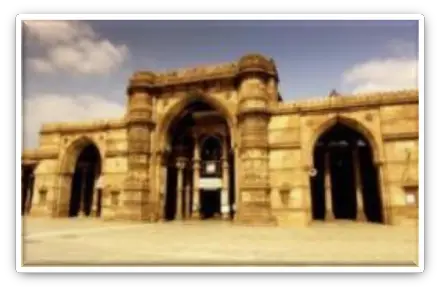
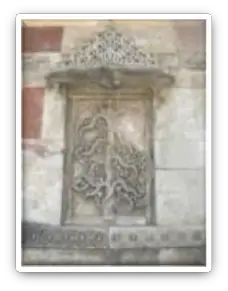
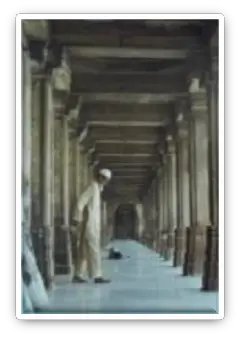
![[filefield-description]](https://www.archinomy.com/wp-content/uploads/case-studies/2011/structural-4.png)
![[filefield-description]](https://www.archinomy.com/wp-content/uploads/case-studies/2011/structural-5.png)
I would liek to know if there
I would liek to know if there is more information on this same topic..